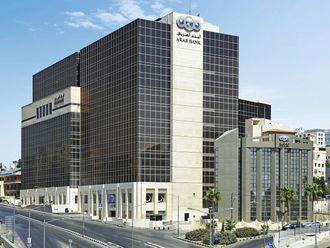
Dubai: Bangladesh's banking sector is undergoing a challenging phase due to a liquidity shortage, following a massive capital outflow that resulted in a stock market crash early last year and restricted the banking sector's ability to finance large projects.
Some 77 banks and fin-ancial institutions serve the country's financial sectors comprising four state-owned commercial banks, 30 commercial banks, nine foreign commercial banks, five specialised commercial banks and 29 non-banking financial institutions.
The majority of Bangladesh's 150 million people still remain outside the banking services. Some of the country's extreme poor, however, are served by micro-credit institutions such as Grameen Bank and the Bangladesh Rural Advancement Committee and hundreds of NGOs serve a significant portion of the rural poor population.
Most banks that had significant exposure to the stock market have been suffering from a liquidity crisis since January 2011 following the market crash. However, despite this, the government has issued permits to open nine new banks, three of which are to be set up by non-resident Bangladeshis (NRBs) — a sign of the growing importance of Bangladeshi expatriate wage earners.
"The banking sector will undergo a tough time for some time as the sector is witnessing a liquidity shortage. With the issuance of the nine new banking licences, the country might become ‘overbanked'," Mahmoud Hussain, President and managing director of Bank Asia, told Gulf News.
"Besides, the government's excessive domestic borrowing has added pressure on us."
Despite these factors, Bangladesh is steadily moving towards a higher growth path, said the International Monetary Fund (IMF).
Challenging factors
"It has achieved an average annual growth rate of 6.2 per cent over the last five years; in particular — a growth rate of 6.1 and 6.7 per cent during FY10 [fiscal year] and FY11 respectively, despite the global economic slowdown [Bangladesh follows a July to June fiscal]," Arvind Virmani, IMF executive director for Bangladesh, said.
"Stable growth in the agriculture sector and an improved performance in the industry and in the service sectors have contributed to this achievement. Moreover, the steps taken to reduce infrastructural bottlenecks in the power, energy, and communication sectors have made a positive impact on crowding in private investment and achieving increased real GDP growth. An additional 3,300MW of electricity has been added to the national grid between January 2009 and March 2012. Bangladesh has also made remarkable progress in achieving the targets of most of the Millennium Development Goals."
Hussain said every year banks collectively open about 200 branches across the country as more and more people are being brought into the banking service network. "As a result, the bankers' mobility has gone up. However, due to the challenging factors, risks have gone up."
Rapid growth in the banking sector and equity markets has strained supervisory capacity and heightened systemic risks, said a recent report by the IMF. The Bangladesh government recognises the importance of strengthening the financial sector to reduce risks and support growth, the IMF said.
"However, macroeconomic pressures have emerged since the last fiscal year. Inflation has been in double digits and fiscal pressure has escalated, mainly due to increased subsidy costs as global oil prices have sharply risen," Virmani said.
Hussain said despite these challenges banks will continue to grow, although a careful approach is needed.
Bank Asia targets NRBs
Bank Asia, a South Asian lender, is targeting non-resident Bangladeshis (NRBs) to tap the $2 billion (Dh7.3 billion) annual remittance outflow from the UAE to the South Asian country, a top official said.
"We are also planning to expand our product offerings for the NRBs — a major resource still unutilised by us," Mahmoud Hussain, President and managing director of Bank Asia, told Gulf News.
The bank has a network of 75 branches and small business centres across Bangladesh.
Its balance sheet size has touched $11 billion (Dh40 billion). Customer deposits reached 98 billion Bangladeshi taka (Dh4.2 billion.)
"We have already held meetings with a number of remittance houses to strengthen the remittance flow to Bangladesh and we are looking at opening more channels," he said.
"We are planning to introduce some new banking products and extend new services for the NRBs."












